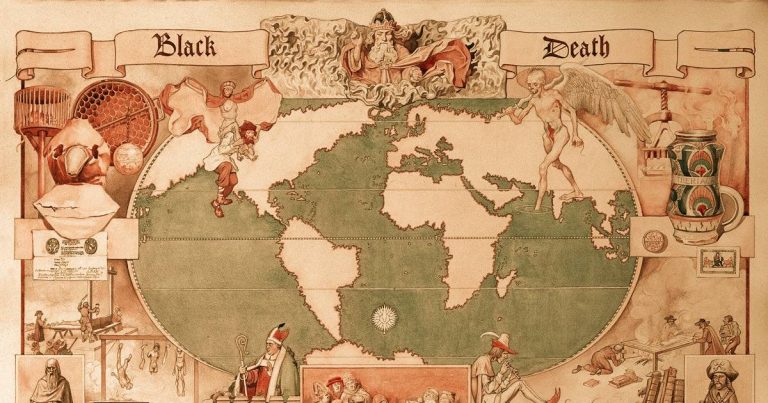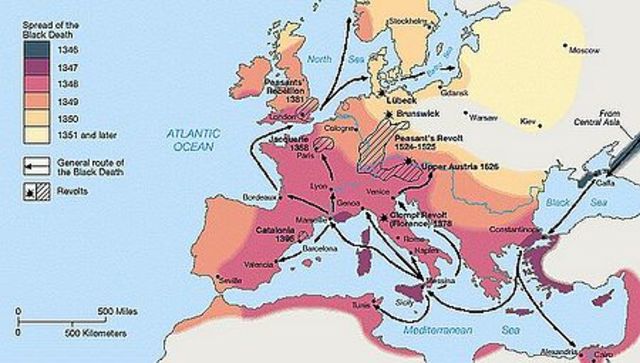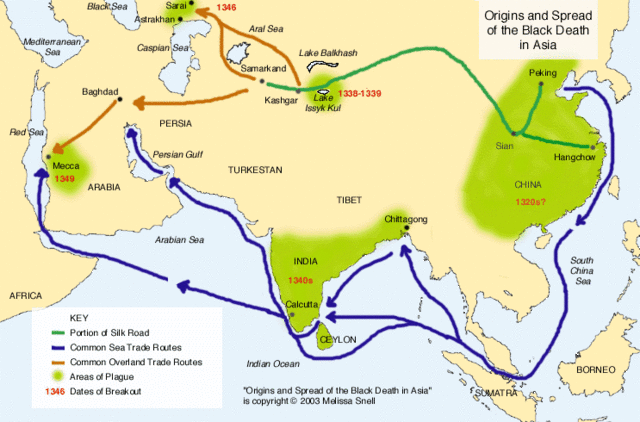Plague bubonic origins middeleeuwen routes brugge 14th originated pandemics tale
Table of Contents
Table of Contents
The bubonic plague, also known as the Black Death, is one of the deadliest pandemics in history that has left an indelible mark on human civilization.
The pain points of where the bubonic plague originated involve the confusion and mystery that surrounds its origins. For centuries, historians and scientists have debated where the disease originated and how it spread across the continents. There is no concrete evidence, and the arguments are based on different views, perspectives, and speculations.
The bubonic plague is believed to have originated from East Asia, specifically from the Gobi Desert region, and spread through the Silk Road. The Silk Road was a trading route that connected East Asia to the Middle East and Europe, and traders, soldiers, and travelers spread the disease along the way.
In summary, the bubonic plague originated from East Asia, particularly the Gobi Desert region, and spread across Asia, Europe, and Africa through the Silk Road, killing millions of people along the way. The disease had a catastrophic impact on the economies, cultures, and societies it encountered.
Where Did The Bubonic Plague Originated: Personal Experience and Understanding
When I first heard of the bubonic plague, I was fascinated by its historical significance, and I decided to learn more about where it originated. I came across different theories and accounts, but most pointed to East Asia as the birthplace of the disease. It’s alarming to learn how a single disease could cause such destruction and chaos.
The bubonic plague, historically known as the Black Death, originated from East Asia, particularly the Gobi Desert region. The disease spread rapidly through the Silk Road, a trading route that connected different continents. Traders, merchants, and travelers played a significant role in transporting the disease from one region to another.
Medical Understanding of Where Did The Bubonic Plague Originated
Studies and research have shown that the bubonic plague originated from East Asia, particularly the Gobi Desert region, and spread through the Silk Road to different parts of the world. The disease is caused by the Yersinia pestis bacteria, which is transmitted through flea bites. The bacteria thrive in rodents and can be passed on to humans through these animals. The disease spread rapidly in unsanitary conditions and could wipe out entire cities in a short period.
The Impact of the Bubonic Plague
The bubonic plague was one of the deadliest pandemics in history, causing widespread fear, confusion, and loss of life. The disease had a devastating effect on the global economy, particularly in the affected regions, leading to poverty, famine, and decline in populations. The bubonic plague also sparked reforms in social, economic, and health sectors, leading to significant changes in the way people viewed medicine, hygiene, and public health.
Where Did The Bubonic Plague Originated: Personal Connection
The bubonic plague has impacted my life by making me realize the importance of hygiene and disease control measures. The pandemic has also taught me to appreciate modern medicine and the efforts of healthcare providers in containing outbreaks and pandemics.
Question and Answer
Q: How did the bubonic plague impact economies in Europe?
A: The bubonic plague decimated the population, leading to a shortage of laborers, which affected the economy’s productivity. The disease also led to a decline in demand for goods and services, which negatively affected trade in the affected regions.
Q: Why was the bubonic plague so deadly?
A: The bubonic plague was lethal because it spread rapidly and disproportionately affected the immune-compromised, such as the elderly and children. The disease spread quickly in crowded and unsanitary areas, leading to high mortality rates.
Q: How was the bubonic plague treated?
A: The bubonic plague was treated using primitive techniques such as bloodletting and applying poultices. Later, antibiotics such as streptomycin and gentamicin were discovered, leading to significant improvements in disease treatment and management.
Q: Did the bubonic plague lead to any significant changes in society?
A: Yes, the bubonic plague led to significant changes in society, including reforms in medical, economic, and social sectors. The pandemic led to the development of quarantine measures, better sanitation, and the establishment of hospitals and health services.
Conclusion of Where Did The Bubonic Plague Originated
The bubonic plague is a significant piece of human history that has left an indelible mark on the global culture and society. The pandemic originated from East Asia, particularly the Gobi Desert region, and spread through the Silk Road, leading to millions of deaths and suffering. The bubonic plague changed the way people viewed medicine, hygiene, and public health, leading to significant reforms in different sectors. Today, we can learn from the bubonic plague’s impact and take necessary measures to prevent pandemics and disease outbreaks.
Gallery
#Week5 - Bubonic Plague - Reading & Worksheet, Along With A Map Of The

Photo Credit by: bing.com / plague bubonic 1348 rapture christendom abrir 1350 rats awful
A History Of Bubonic Plague – Brewminate: A Bold Blend Of News And Ideas

Photo Credit by: bing.com / plague bubonic brewminate echoes
Medieval Europe Timeline | Timetoast Timelines

Photo Credit by: bing.com / plague bubonic timetoast fleas infected timeline
710 - 1868 - Shogunate Japan, Medieval Europe And Black Death Timeline
Photo Credit by: bing.com / plague bubonic origins middeleeuwen routes brugge 14th originated pandemics tale
Climate May Have Played A Key Role In The Spread Of Bubonic Plague

Photo Credit by: bing.com / plague bubonic lithograph praying







